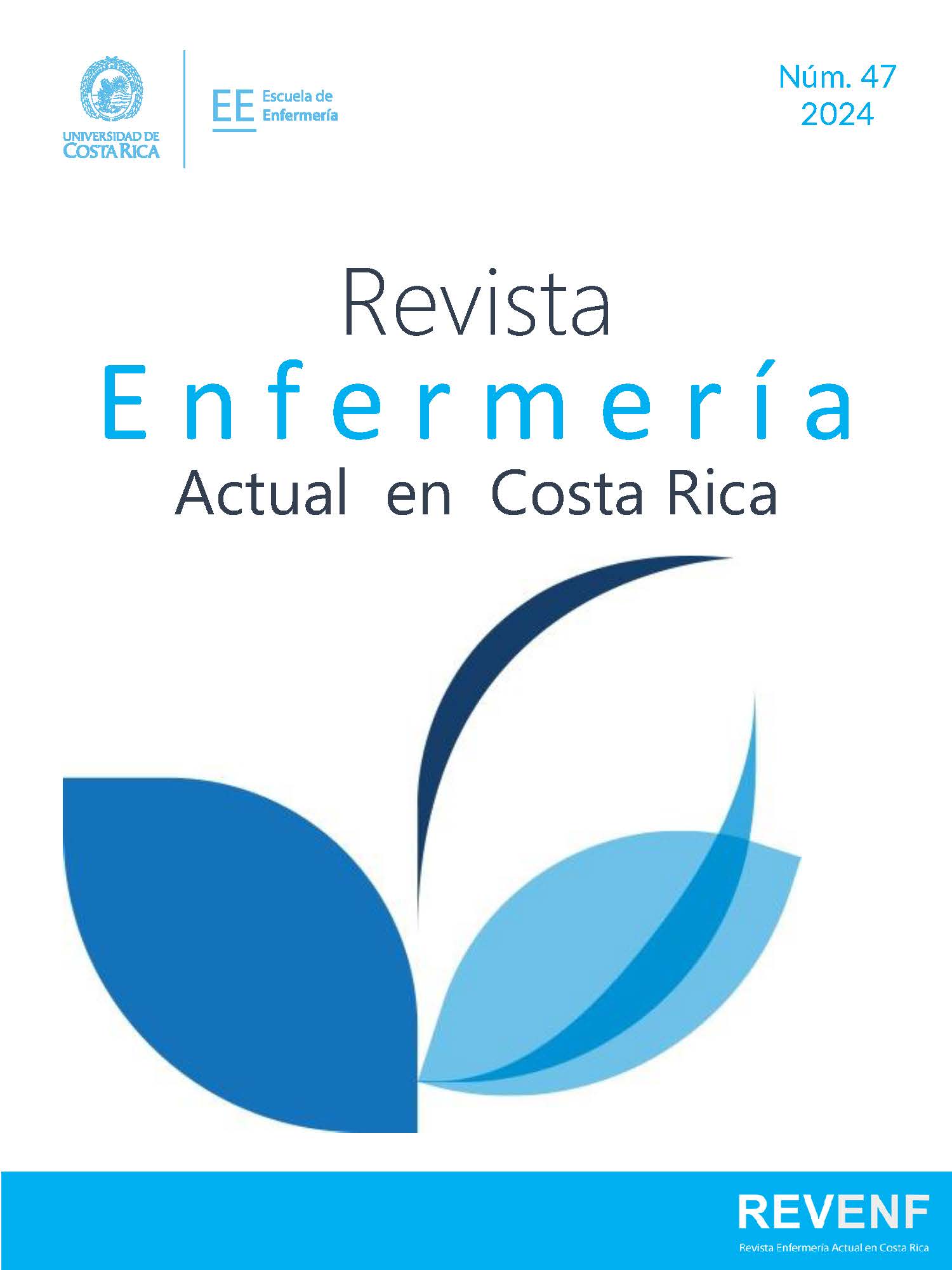Abstract
Introduction: Respectful communication includes social, verbal, and non-verbal interaction, including mutual understanding and respecting values, beliefs, and cultural preferences to promote equity in health care. Failures in the communication process are considered one of the main factors behind the occurrence of adverse events and, consequently, a decrease in the quality of care.
Objective: To understand how the interprofessional communication process is developed to ensure patient safety in the Neonatal Intensive Care Unit.
Method: Convergent care research carried out from July to August 2019 with 17 professionals from the health team of the Neonatal Intensive Care Unit of a University Hospital in southern Brazil.
Results: Two categories were elaborated to present the information collected: Verbal and non-verbal communication; Facilitating and hindering factors in communication. From the theoretical-practical convergence, it was possible to develop a Standard Operating Procedure Protocol for Effective Communication for its practical implementation.
Conclusion: Verbal communication during the shift change was perceived as the main tool, contributing to patient care and safety, being the connection between professionals an important factor to improve it. This connection, together with ongoing training, favors effective communication.
References
Biasibetti C, Rodrigues FR, Hoffman LA, Vieira LB, Gerhardt LM, Wegner W. Patient safety in Pediatrics: perceptions of the multi-professional team. REME. 2020; 24:e-1337. doi: 10.5935/1415.2762.20200074
Hesse C, Rauscher EA. The Relationships Between Doctor-Patient Affectionate Communication and Patient Perceptions and Outcomes. Health Commun. 2019;34(8):881-891. doi: 10.1080/10410236.2018.1439269
World Health Organization. Global patient safety action plan 2021–2030: towards eliminating avoidable harm in health care. Geneva: World Health Organization; 2021.
Ministério da Saúde (BR). Portaria nº 529, de 1 de abril de 2013. Institui o Programa Nacional de Segurança do Paciente (PNSP). Diário Oficial da União República Federativa do Brasil. 2013 abr 2;62 (Seção 1):43.
Araújo MAN, Filho-Lunardi WD, Silveira RS, Souza JC, Barlem ELD, Teixeira NS. Segurança do paciente na visão de Enfermeiros: uma questão Multiprofissional. Enferm foco. 2017; 8(1):52-56. doi: 10.21675/2357-707X.2017.v8.nl.984
Ministério da Saúde (BR). Portaria Nº 930, de 10 de maio de 2012. Define as diretrizes e objetivos para a organização da atenção integral e humanizada ao recém-nascido grave ou potencialmente grave e os critérios de classificação e habilitação de leitos de unidade neonatal no âmbito do SUS. Diário Oficial da União República Federativa do Brasil. 2012 mai 10; 94(Seção 1):122.
Rodrigues FA, Wegner W, Kantorski KJC, Pedro ENR. Patient safety in a neonatal unit concerns and strategies experienced by parents. Cogitare enferm. 2018;23(2):e52166. doi: 10.5380/ce.v23i1.52166
Trentini M, Paim L, Silva DGV, Peres MAA. Convergent care research and its qualification as scientific research. Rev Bras Enferm. 2021;74(1):e20190657. doi: 10.1590/0034-7167-2019-0657
Ministério da Saúde (BR). Resolução nº 466, de 12 de dezembro de 2012. Aprova diretrizes e normas regulamentadoras de pesquisas envolvendo seres humanos. Diário Oficial da União República Federativa do Brasil. 2013 jun 13; 112(Seção 1):59.
Nascimento LCN, Souza TV, Oliveira ICDS, Moraes JRMM, Aguiar RCB, Silva LFD. Theoretical saturation in qualitative research: an experience report in interview with schoolchildren. Rev Bras Enferm. 2018; 71(1):228-233. doi: 10.1590/0034-7167-2016-0616
Tong A, Sainsbury P, Craig J. Consolidated criteria for reporting qualitative research (COREQ): a 32-item checklist for interviews and focus groups. Int J Qual Health Care. 2007; 19(6): 349-57. doi: 10.1093/intqhc/mzm042
Previato GF, Baldissera VDA. Portraits of interprofessional collaborative practice in primary health care teams. Rev Gaúcha Enferm. 2018; 39:e2017-0132. doi: 10.1590/1983-1447.2018.2017-0132
Olino L, Gonçalves AC, Strada JKR, Vieira LB, Machado MLP, Molina KL, et al. Effective communication for patient safety: transfer note and Modified Early Warning Score. Rev Gaúcha Enferm. 2019; 40(esp):e20180341. doi: 10.1590/1983-1447.2019.20180341
Almeida FAV, Costa MLAS. Passagem de Plantão na equipe de Enfermagem: um estudo bibliográfico. Arq méd hosp Fac Ciênc Méd Santa Casa São Paulo [Internet]. 2017 [citado 2021 nov 21]; 62(2): 85-91. Disponível em: https://arquivosmedicos.fcmsantacasasp.edu.br/index.php/AMSCSP/article/view/49/35
Müller M, Jürgens J, Redaèlli M, Klingberg K, Hautz WE, Stock S. Impact of the communication and patient hand-off tool SBAR on patient safety: a systematic review. BMJ Open. 2018; 8:e022202. doi: 10.1136/bmjopen-2018-022202
Carvalho LA, Thofehrn MB, Barlem ELD, Nunes NJS. Ressignificating theory of professional links in nursing work. Esc Anna Nery Rev Enferm. 2020: 24(1). doi: 10.1590/2177-9465-ean-2019-0138
Moreira FTLS, Callou RCM, Albuquerque GA, Oliveira RM. Effective communication strategies for managing disruptive behaviors and promoting patient safety. Rev Gaúcha Enferm. 2019;40(esp):e20180308. doi: 10.1590/1983-1447.2019.20180308
Wang Y, Wan Q, Lin F, Zhou W, Shang S. Interventions to improve communication between nurses andphysicians in the intensive care unit: An integrative literature review. Int J Nurs Sci. 2018;5: 81-8. doi: 10.1016/j.ijnss.2017.09.007
Bohomol E. Patient safety education of the graduation in Nursing from the teaching perspective. Esc Anna Nery Rev Enferm. 2019; 23(2):e20180364. doi: 10.1590/2177-9465-EAN-2018-0364
Toffoletto MC, Tello JDA. Telenursing in care, education and management in Latin America and the Caribbean: an integrative review. Rev Bras Enferm. 2020; 73(Suppl 5):e20190317. doi: 10.1590/0034-7167-2019-0317
Comments

This work is licensed under a Creative Commons Attribution-NonCommercial-ShareAlike 4.0 International License.
Copyright (c) 2024 Vanessa Acosta Alves, Viviane Marten Milbrath, Ruth Irmgard Bärtschi Gabatz, Tuize Damé Hense, Diana Cecagno, Camilla Benigno Biana


